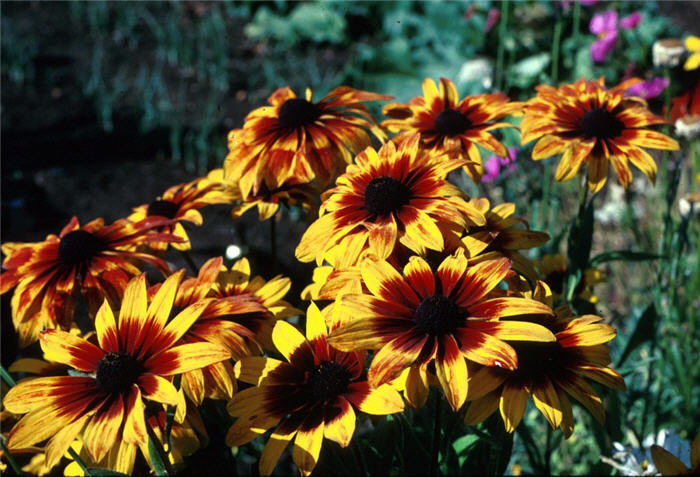| Botanical Name: Rudbeckia fulgida | |
| Common Name: Black-eyed Susan |

-
Anatomy
-
Culture
-
Design
Plant Type
Perennial
Height Range
1-3'
Flower Color
Yellow
Flower Season
Summer, Fall
Leaf Color
Dark Green
Bark Color
n/a
Fruit Color
n/a
Fruit Season
n/a
Sun
Full
Water
Low, Medium
Growth Rate
Moderate
Soil Type
Sandy, Clay, Loam, Rocky, Unparticular
Soil Condition
Average, Rich, Poor, Well-drained, Dry
Soil pH
Neutral
Adverse Factors
n/a
Design Styles
English Cottage, Meadow, Ranch, Spanish
Accenting Features
Showy Flowers
Seasonal Interest
Summer, Fall
Location Uses
Perennial Border, Shrub Border, Foundation, Patio, Raised Planter, Walls / Fences
Special Uses
Cut Flowers, Erosion Control, Mass Planting, Naturalizing
Attracts Wildlife
Birds, Butterflies
Information by: Stephanie Duer
Photographer: Linda Engstrom
Photographer: Linda Engstrom
-
Description
-
Notes
Golden yellow daisy-like flowers borne in abundance and over the heat of the summer makes Black-eyed Susan a garden mainstay. Blooms typically occur mid summer and continue into early fall. Petals are flat to recurved, and the central discs are prominent and reddish brown to purple. Makes an excellent cut flower, though the seeds are highly enjoyed by birds. Leaves are lance-shaped to oval and a deep green. Grows about 30 to 36 inches tall and wide. Not common in the trade as there are so many named cultivars available, such as 'Goldsturm' and 'Viette's Little Suzy.'
Grow in well drained soil and in full sun. Tolerates a range of soil types, including clay soil, dry soil, shallow soil, rocky soil. Drought and heat tolerant. Though prefers full sun, will tolerate a little shade. Rhizamatous habit means it spreads to form dense colonies, so just plan accordingly when you plant it. Leave flower stalks all winter as the seeds will feed the songbirds and provide winter interest. Cut back stalks and old foliage in late winter. Drought tolerant once established, but blooming period will be longer and more flowerful if watered periodically.